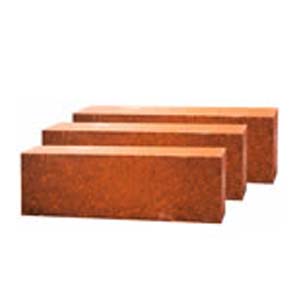Refractory clay refers to clay that can be used as refractory materials at the price of magnesia carbon bricks with a refractoriness greater than 1580°C and bauxite used as refractory materials. In addition to their high refractoriness, they can maintain volume stability under high temperature conditions, and have slag resistance, resistance to rapid cold and rapid heat, and certain mechanical strength, so they are extremely firm after calcination.
Refractory clay is divided into four types: soft clay, semi-soft clay, hard clay and high alumina clay according to plasticity, ore characteristics and industrial use. Soft clay is generally soil-like, easily dispersed in water, and can form a plastic mud mass after being mixed with liquid; semi-soft clay has poor dispersibility, and its immersed part can also form a plastic mud mass after being mixed with liquid . These two clays are often used as bonding agents when making refractory products. Hard clay is often in the form of blocks or slabs, and is generally not immersed in water, with high refractoriness, and is the main raw material for refractory products. High alumina clay has high content of Al2O3, high hardness and specific gravity, and high refractoriness. It is often used to make high-grade clay products.

Refractory clay is mainly used in the metallurgical industry as a raw material for the production of shaped refractories (bricks of various specifications) and unshaped refractories, and the amount of refractory clay accounts for about 70% of all refractory materials. The hard clay in the refractory clay is used to make blast furnace refractories, lining bricks and plug bricks for iron smelting furnaces, hot blast furnaces, and steel drums. High-alumina clay is used to make aluminum bricks for electric furnaces and blast furnaces, high-alumina lining bricks and high-alumina refractory clay. Hard clay and high alumina clay are often used for calcining mature materials at high temperature (1400~1800℃).
Refractory clay is used in the building materials industry to make high alumina bricks, phosphate high alumina refractory bricks, and high alumina cast bricks for cement kilns and glass melting kilns. High-alumina clay is calcined and then mixed with limestone to make aluminum-containing cement. This cement has the characteristics of quick-setting ability, corrosion resistance and strong heat resistance.
Refractory clay also has important applications in the grinding industry, chemical industry and ceramic industry. High-alumina clay is melted in an electric arc furnace to produce abrasive materials. Among them, fused corundum abrasive is currently the most widely used abrasive, accounting for 2/3 of all abrasive products. High alumina clay can be used to produce various aluminum compounds, such as aluminum sulfate, aluminum hydroxide, aluminum chloride, potassium aluminum sulfate and other chemical products. In the ceramic industry, hard clay and semi-hard clay can be used as raw materials for the manufacture of daily ceramics, architectural ceramics and industrial ceramics.









